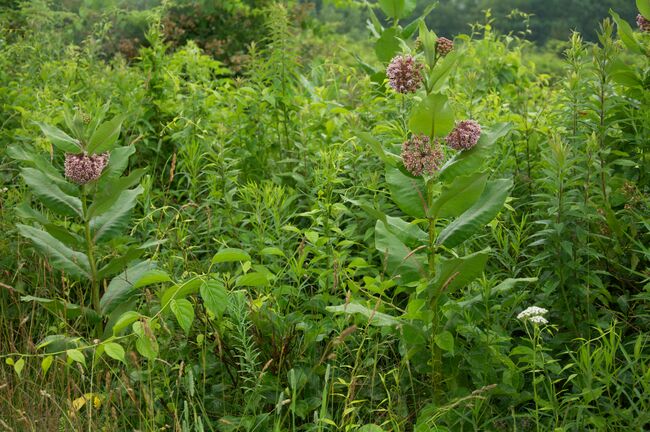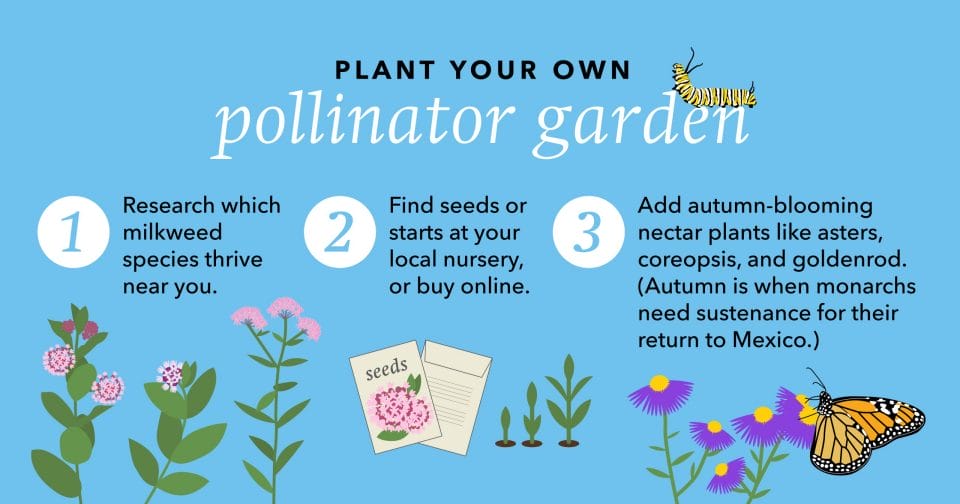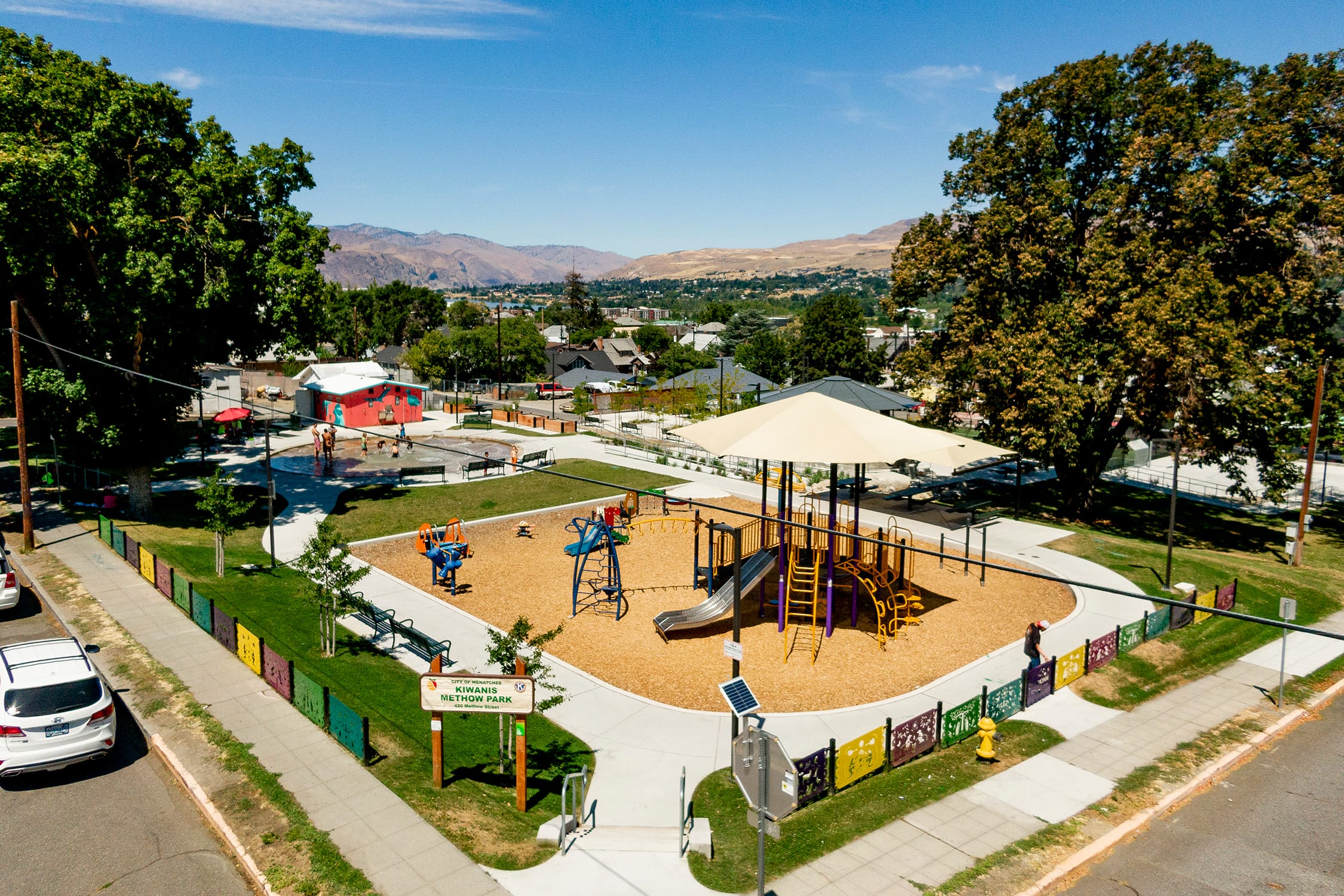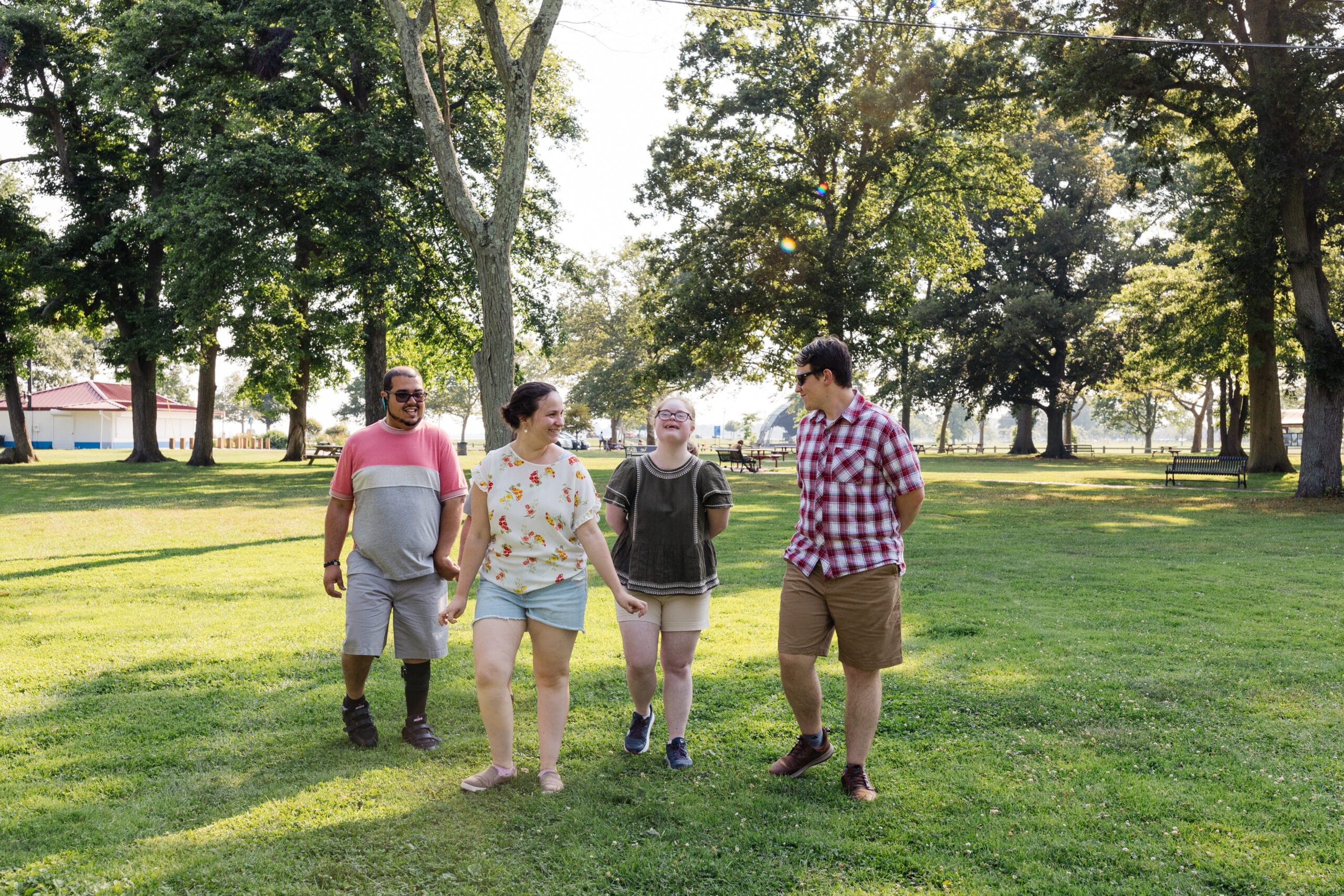
Staying close to home this spring? Plant a pollinator garden.
Staying close to home this spring? Plant a pollinator garden.
Even if your favorite parks are closed to help slow the spread of COVID-19, you can still find nature in your neighborhood—and you can even help care for the planet from your own backyard or balcony.
How? Plant some milkweed. It’s a beautiful, hardy perennial, and it’s crucial for struggling populations of monarch butterflies and other pollinators.
Every spring, millions of monarch butterflies embark on a harrowing multigenerational migration. Leaving their winter range in the mountains of central Mexico, each butterfly covers part of the journey, lays eggs, and dies. Its offspring continue the journey, in a sort of migratory relay race, reaching Kansas and Missouri, and eventually—several weeks and generations later—monarchs arrive across the northern United States and Canada, where they and their fellow pollinators play a central role in maintaining biodiversity—and pollinating crops that feed the nation.
 Milkweed is a herbaceous perennial that is not only beautiful and hardy, but will give a boost to the struggling populations of monarch butterflies and other pollinators.Photo credit: Rebekah Butler
Milkweed is a herbaceous perennial that is not only beautiful and hardy, but will give a boost to the struggling populations of monarch butterflies and other pollinators.Photo credit: Rebekah Butler
In recent years The Trust for Public Land has helped protect butterfly habitat at Balcones Canyonlands National Wildlife Refuge in Texas, where plant life sustains monarch migrations, and the Baskett Slough National Wildlife Refuge in Oregon’s Willamette Valley, the only place on earth where the Fender’s blue butterfly is found.
Supporting butterflies, especially monarchs, has never been more important, says Kyle Kasten of the nonprofit Monarch Joint Venture. As herbicide-tolerant crops took root in the 1990s across the Midwest, a resulting rise in herbicide use all but wiped out milkweed, the only plant on which monarchs will lay eggs (monarch caterpillars eat nothing else).
Researchers measure monarch abundance in the wintering grounds of Mexico’s Michoacan Province. In 1996, wintering monarchs occupied 18 hectares. In 2019-2020, that area had shrunk to 2.8 hectares—a result, scientists say, of the loss of milkweed which once grew abundantly in the margins of farms and forests throughout the nation.
 Balcones Canyonlands National Wildlife Refuge is home to rare songbird species and has important habitat for migrating monarch butterflies.Photo credit: Flickr user Mark Bonica
Balcones Canyonlands National Wildlife Refuge is home to rare songbird species and has important habitat for migrating monarch butterflies.Photo credit: Flickr user Mark Bonica
Scott Rowin is the biologist at Balcones Canyonlands National Wildlife Refuge, where The Trust for Public Land helped protect Peaceful Springs Preserve, a 520-acre expanse of limestone canyons, juniper woodlands, and shrublands. Over more than two decades, we’ve added some 3,000 acres to the 27,500-acre wildlife refuge, a benefit to people and pollinators alike. “The population of monarchs has declined primarily due to habitat loss, especially milkweed,” Rowin says. “Within the refuge itself, we have an abundance of milkweed. And we have a fairly active prescribed fire program, which encourages wildflowers so there will be a nectar source.”
Protecting land at places like Balcones Canyonlands from development, and ensuring it’s managed with ecological health in mind, is increasingly important for pollinators. Alongside experts who manage our public lands, a national movement has emerged to encourage a milkweed revival. The nonprofit Monarch Watch has tips on creating “monarch waystations” on private land. Over 27,000 landowners have registered waystations ranging in size from one hundred square feet to several acres.
So what to do? Find out what types of milkweed thrive in your region and plant it in your yard, or in pots on your balcony or patio. (This map from Monarch Watch divides the country into four eco-regions. You can enter your zip code and see which milkweed species to consider.) In the Northeast, common milkweed, swamp milkweed, and butterfly milkweed all do well, while in the West, showy milkweed and antelope horn milkweed are good options. The group also has free milkweed plants available for schools and larger restoration projects
If you start with seeds, you will need to put them in the refrigerator for 30 to 60 days, a process known as cold stratification. Then plant the seeds in peat pots or seed trays in a sunny window before transferring the seedlings to the yard after the last frost. Or you can buy plugs or starts, tiny plants which can be ordered by mail from any number of nurseries.
 Photo credit: The Trust for Public Land
Photo credit: The Trust for Public Land
You can also sprinkle in some nectar plants, especially those that bloom in autumn, like asters, goldenrod, coreopsis, and Joe-Pye weed. That’s when monarchs need sustenance as they fly thousands of miles south to Mexico from the northern states and Canada.
Chip Taylor, founder and director of Monarch Watch, says planting a butterfly garden helps sustain ecological balance throughout the hemisphere—and it could help you weather the COVID-19 crisis, too. “We can do something that is positive and then enjoy the richness of what we have done,” says Taylor. “It might help relieve some of the anxiety we are feeling right now.”
This raw, beautiful landscape in Southern California is home to Indigenous heritage sites, and it provides critical habitat for threatened and endangered species. Urge President Biden to safeguard this extraordinary landscape today!


Donate to become a member, and you’ll receive a subscription to Land&People magazine, our biannual publication featuring exclusive, inspiring stories about our work connecting everyone to the outdoors.
See how our supporters are helping us connect people to the outdoors across the country.










